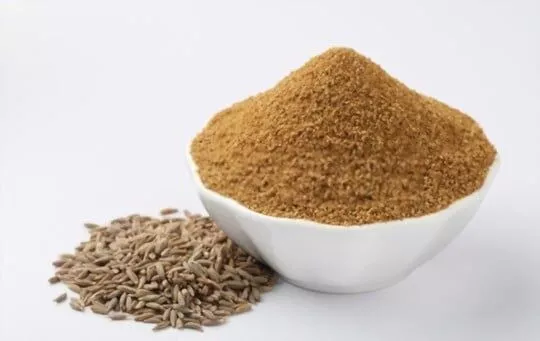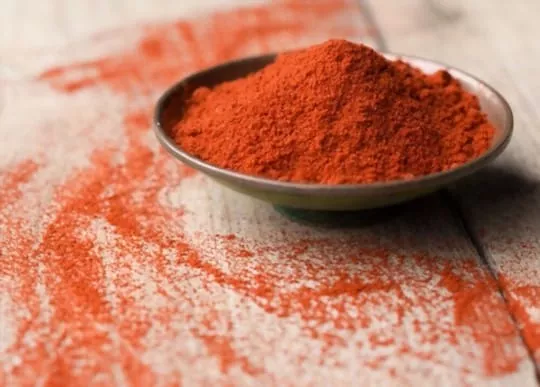Turmeric, with its warm, earthy flavor and vibrant yellow hue, is a key ingredient in many curry dishes.
Its unique characteristics not only add a depth of flavor but also provide numerous health benefits, making it an essential component in many Asian cuisines.
But what if you find yourself without any turmeric in your kitchen?
What are the best substitutes for turmeric in curry? The best substitutes for turmeric in curry include saffron, curry powder, cumin, annatto, and paprika. Each of these alternatives can provide a similar taste, color, or both, depending on the specific needs of your recipe.
No need to worry if you’re missing turmeric; these substitutes will help you create a delicious and satisfying curry dish without compromising on taste or appearance.
Let’s dive into the details of each substitute and learn how to use them effectively in your curry dishes.
Why Use Turmeric in Curry?

Turmeric is a common ingredient in curry because of its unique flavor and health benefits.
The active ingredient in turmeric is a natural compound called curcumin, which has both antioxidant and anti-inflammatory properties.
Curcumin has many biological activities, not all of which are understood.
Turmeric is also known for its bright yellow color, which gives curry its characteristic hue.
Additionally, turmeric has a warm, slightly bitter flavor that pairs well with other spices commonly used in curry, such as cumin and coriander.
Its flavor and health benefits make it a popular ingredient in many curry recipes.
The 5 Best Substitutes for Turmeric in Curry
Turmeric is a key ingredient in many curry dishes, but it can be hard to find in some places.
If you’re looking for an alternative, here are five substitutes that will still bring out the flavor of your dish:
1. Saffron

Saffron, known as the most expensive spice in the world, is derived from the crocus flower’s stigma.
Its striking crimson threads, when added to dishes, lend a beautiful golden hue and a subtle, earthy, and floral taste.
While saffron may not perfectly replicate turmeric’s flavor, it does offer an attractive color and an intriguing taste to curry dishes.
Keep in mind that a little saffron goes a long way, so use it sparingly.
Typically, only a few threads are needed to replace a teaspoon of turmeric.
Before adding saffron to your curry, it’s best to crush the threads and soak them in warm water for a few minutes to release their flavor.
This luxurious spice can elevate your curry to a gourmet experience and is certainly worth trying as an alternative to turmeric.
2. Curry powder

Curry powder is a pre-blended mix of spices commonly used in Indian and Southeast Asian cuisine to create flavorful, aromatic dishes.
Usually, the mixture includes turmeric, coriander, cumin, red pepper, and other spices, depending on regional preferences.
If you find yourself without turmeric, using curry powder in its place can provide a similar color and taste to your curry dish.
However, be cautious with the amount used, as curry powder contains additional spices that may alter the flavor profile of your dish.
It’s advisable to start with half the amount of turmeric called for in the recipe and adjust according to taste.
3. Cumin

Cumin is a warm, earthy spice that is a staple in Indian, Middle Eastern, and Mexican cuisines.
It’s derived from the dried seeds of the Cuminum cyminum plant and is available in both whole and ground forms.
While cumin doesn’t impart the vivid yellow color that turmeric provides, its flavor profile shares similarities, making it a suitable choice when looking for a turmeric replacement in curry dishes.
To substitute, use equal parts cumin as the amount of turmeric called for in the recipe.
Bear in mind that cumin has a more robust flavor, so it is wise to start with a smaller amount and adjust according to taste.
The unique, smoky taste of cumin can bring a new dimension to your curry, offering a delicious alternative to the traditional turmeric flavor.
4. Annatto

Annatto, also known as achiote, is a spice derived from the seeds of the Achiote tree, native to tropical regions of the Americas.
It is a versatile and widely used ingredient in many Caribbean, Latin American, and Filipino recipes.
Annatto is prized for its natural coloring properties, which range from yellow to deep orange, making it a fitting alternative to turmeric in curry dishes.
In addition to its vibrant hue, annatto possesses a slightly sweet, peppery flavor profile that can enhance the taste of curries and other dishes without overpowering them.
To replace turmeric with annatto, use a 1:1 ratio by simply substituting the same amount of annatto for the required turmeric in your recipe.
However, keep in mind that annatto’s flavor may be milder, so you might want to adjust other spices in your curry to maintain the desired taste and complexity.
5. Paprika

Paprika is a popular spice made from ground, dried red peppers, and is often used in various cuisines, such as Spanish, Hungarian, and Middle Eastern dishes.
Paprika comes in different varieties, from sweet to hot, and can provide a striking color and depth of flavor to your curry.
While paprika’s taste may not be identical to turmeric, its earthy, smoky, and slightly sweet notes can still complement the other spices in your dish.
To use paprika as a turmeric alternative, start with a 1:1 substitution ratio, but be mindful of the specific type of paprika you are using.
For a milder flavor, opt for sweet paprika; for a spicier kick, choose hot paprika.
You may need to adjust the amount of paprika or other spices in your curry to achieve the desired taste and intensity.
Frequently Asked Questions (FAQs)
What spice can you use instead of turmeric?
There are several spices that can be used instead of turmeric, including saffron, annatto seed, paprika, and cumin. Each of these spices has a unique flavor and may not provide the same health benefits as turmeric, but can be used as a substitute in recipes where turmeric is called for.
Does curry have to have turmeric?
Curry does not necessarily have to have turmeric, but it is a common ingredient in many curry recipes. Other spices commonly used in curry include cumin, coriander, and ginger.
Can turmeric be substituted for cumin?
Turmeric cannot be substituted for cumin, as they have different flavors and are not interchangeable. However, cumin can be used as a substitute for turmeric in recipes where turmeric is called for but not readily available.
Conclusion
In conclusion, while turmeric is a common ingredient in curry, there are several substitutes that can be used to achieve similar flavor and color.
Saffron, curcumin, ground ginger, ground cumin, and turmeric paste are all excellent substitutes for turmeric in curry.
Each of these substitutes has a unique flavor and may provide different health benefits, but can be used interchangeably in recipes where turmeric is called for.
Experimenting with these substitutes can add variety to your curry dishes while still providing the warm, slightly bitter flavor and bright yellow color that turmeric is known for.

The 5 Best Substitutes for Turmeric in Curry
Ingredients
- Saffron
- Curry powder
- Cumin
- Annatto
- Paprika
Instructions
- Pick your favorite substitute from the list above.
- Follow cooking directions for your selected substitute with the proper ratio of ingredients.
Jenny has always been passionate about cooking, and she uses her platform to share her joy of food with others. Her recipes are easy to follow, and she loves giving tips and tricks to help others create their own unique culinary creations.

